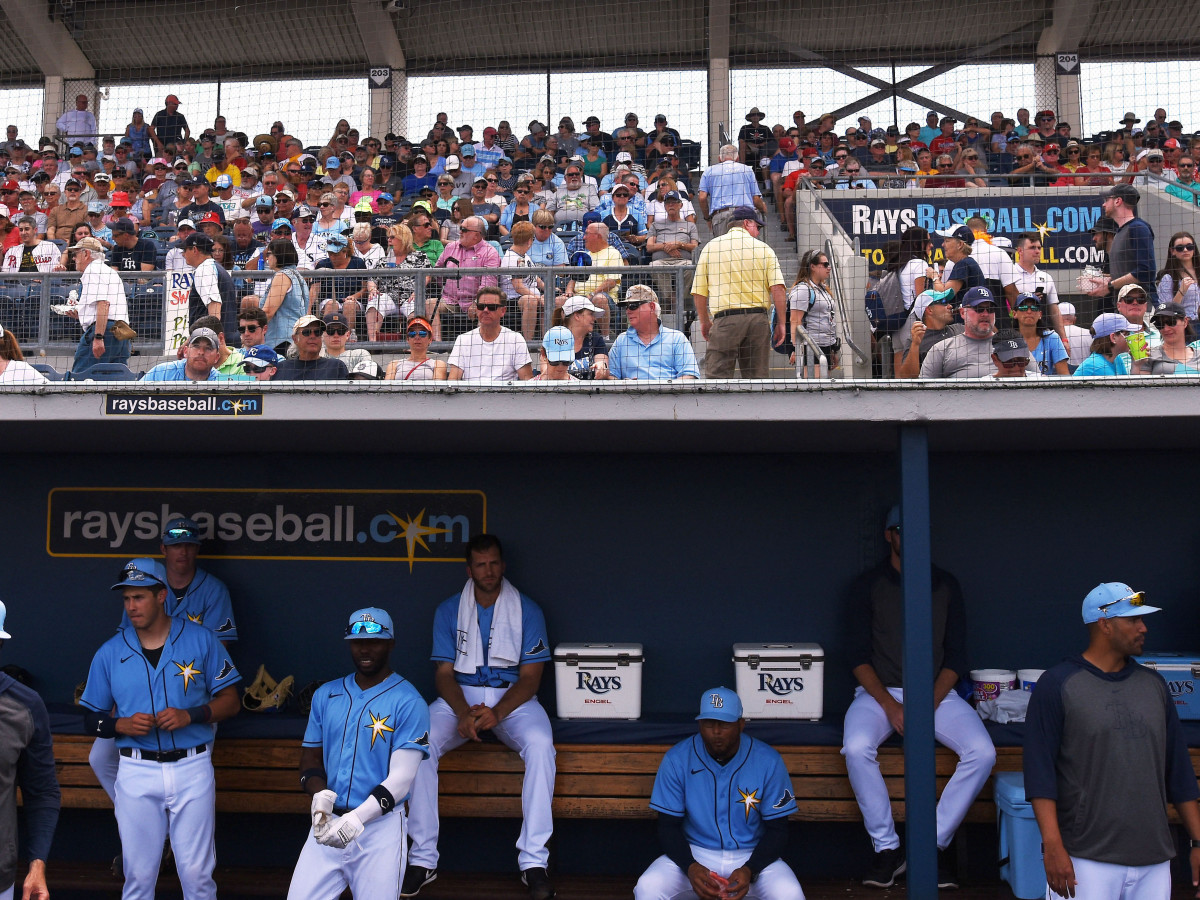Shutting Down MLB Was the Right Call. But What Happens Now?
Major League Baseball is shut down for a month. And that is the best-case scenario.
This dark world of the coronavirus renders the best thing about baseball the worst possible threat to our health: the gathering together as a community.
Major League Baseball had no choice. Not after the NBA reacted to the first of its players being infected by the virus by suspending its season. Not after Anthony Fauci, the head of the National Institute of Allergy and Infectious Diseases, told Washington lawmakers, “We would recommend that there not be large crowds.” Not after local municipalities from New York to San Francisco to Seattle banned any large gatherings.
From here on out, MLB does have choices. What do you do about players–send them home or keep them in camps? Does baseball still play a 162-game season? How much time will players need to ramp up again for regular season play? Do they return with “soft” openings in empty ballparks?
There are a host of difficult decisions ahead. There is no blueprint from which to reference. But the guiding principle must be this alone: whatever is best for public health and safety. Economics, logistics and traditions must not drive decisions.
Former commissioner Bud Selig used to talk about the “integrity of 162 games.” He wanted all rainouts made up, even if they didn’t affect the standings, because 162 is one of those sacred baseball numbers.
None of that matters now. What matters is listening to the professional health experts.
There will be a time when baseball will have to decide what a 2020 season and postseason will look like. The general thinking is that in the best-case scenario–say an Opening Day around April 9–it could still play a 162-game season. The extra days off granted in the last CBA could be excised. The postseason could be extended one or two weeks into November. (Weather, such as is possible in Minnesota or Colorado at that time of year, could force consideration of alternate sites.)

Anything beyond the best-case scenario brings into play a truncated season–and teams would be at the mercy of the remaining schedule, as happened in 1972, when the Red Sox finished one-half game behind the Tigers and played one fewer game.
But that time for planning is not now. The spread of this virus is too active and too unpredictable right now to know when it is even possible to have baseball again. These are days in our world unlike anything we’ve seen, but for what fills the pages of imaginative dystopian novels. This is too real. Baseball is just a small part of the uprooting of our normalcy.
Just as we approach the coming of spring, and how important a role baseball plays in the routine of our lives at this time of year, we have no baseball. None. No major leagues. No minor leagues. Virtually no high school and college baseball. Trees will still bloom and songbirds will still trill, but they and us will go on in a world without baseball.
Nothing like this has happened before. Baseball shut down after the 9/11 attacks, but resumed a week later. Labor strife has disrupted many a season, but those were self-inflicted wounds. Now we are at the mercy of the path of a global pandemic.
Baseball played through the great influenza pandemic of 1918-19, when about a quarter of the world’s population was stricken and 675,000 Americans were killed by it, including one umpire and six former players. (The 1918 World Series was played in September, but that was because of a season shortened by World War I. Doctors in Boston cautioned against playing in front of large crowds, but the series went off uninterrupted–unlike the subsequent Stanley Cup finals.) Attendance actually went up 93% in the post-war environment of 1919, but back then you were talking about 5,000 people per game, not the six-fold increase you have today.
There are trying times for baseball commissioner Rob Manfred. He was blindsided by the fallout from his Astros sign-stealing investigation, which including taking heat for a lack of full transparency. He still hasn’t wrapped up the investigation into the 2018 Red Sox for misusing technology to steal signs. He hasn’t reached agreement with the players on tougher technology protocols for the 2020 season to guard against future misuse. He has a CBA that expires in two years, and hasn’t convinced the players yet to extend it while agreeing to an expanded postseason proposal. His attendance is down seven straight years. His games are played at an all-time slow pace.
Today it all seems so small. The banging on a trash can, the crackdown on pitchers using pine tar, the three-batter minimum rule, the 26th man on the roster, the pace of play … Oh, how we wish for that day again when the granular details of this little ball-and-bat pastime mean so much to us again.
Today there is no baseball. There will be none for a month, at least. Speculation is folly when we are lost in a strange land and the future is a thick black curtain in front of us. We have no idea when we will see baseball again.
